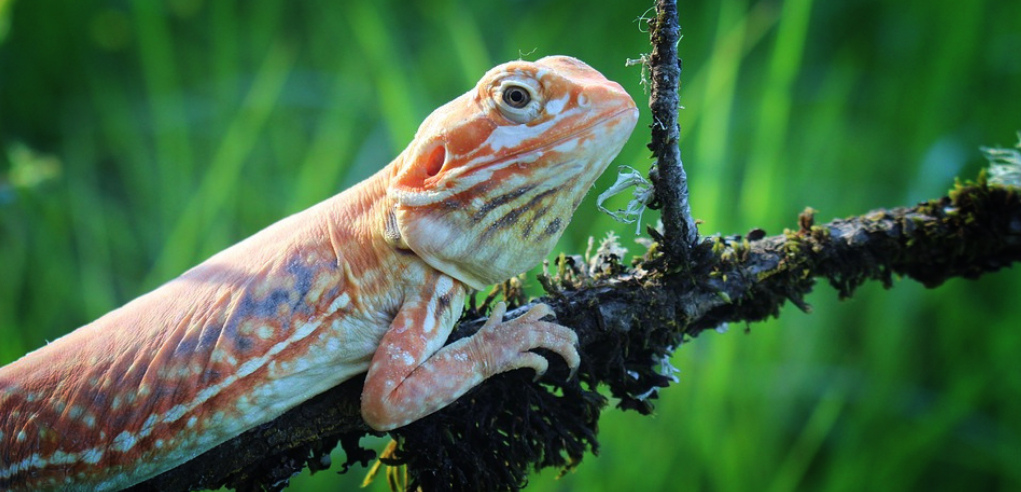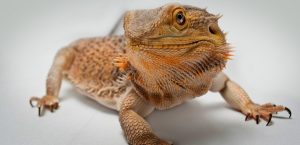Hypo and Het and Trans, Oh My!
Baby Bearded Dragon Types: Morphology
When most people think of baby beardie types, they think of color. That’s completely understandable, given how beautiful- sometimes outright stunning- our sunny citrus and fiery red little friends can be.
There are several other traits that contribute to the overall typing of dragons, however. Being familiar with those traits can assist you in picking out a new baby or in having a better understanding of your current sweetie. Heck, that knowledge could possibly serve to impress your friends or help you to win a round of trivia. You never know!
Say Wha?!?
Something you should know: you can’t take two steps into learning about bearded dragons without bumping into bizarre-sounding words and abbreviations. It’s like a whole new language, one that sports words like: morph, wero, trans, Dunner, hypo, silkie, het, and witblit.
Yes, I said “witblit.” And no, that’s not a typo or a new type of fitness tracking device! It’s actually a specific type of variation in a dragon’s make-up, or what those in the beardie community call its Morphology. Or “morph,” for short.
A bearded dragon’s morph refers to its identifying characteristics, beyond skin color. It encompasses things like scales and spikes, skin qualities, markings and patterns, eyes, toenails, and body type. A morph isn’t necessarily tied to color. Two beardies can have the same morph and be different colors, and two can share the same shade and still have different morphs.
Morph Types
Let’s take a quick look at common types of morphs for baby bearded dragons.
Scales & Spikes
A Classic (or “standard”) beardie, one of our au naturel cuties, will have spikes and scales all over his or her back, lined up in one direction. They might look rough and sharp, but that’s mostly just a show to deter predators. If you hold and touch your baby dragon correctly, there is no risk of injury (or even discomfort) from the spikes.
Even so, some people prefer beardies who have fewer (or even no) spikes and scales, or ones that have unusual patterns of them.
One of the most favored of these types of dragons is the Leatherback morph. They have scales all over, which follow a directional pattern. This gives them a smooth feel, like fine leather. They do have spikes, but only along their outer silhouette, running in a line that traces the edge of their head and back, with none anywhere else.
A similar morph is the Dunner type, which has the same silhouette of spikes and a covering of scales. Only the scales don’t follow a consistent pattern, they go this-a-way and that-a-way, running kind of willy-nilly. The effect is a rough skin texture, like sandpaper. You might not want to go dancing cheek-to-cheek with your Dunner beardie.
A Silkback, or Silkie, morph has no scales or spikes at all, and is completely smooth and silkie to the touch, almost like a frog. Their colors are lovely, but hydration can be an issue and silkies need special care. Some silkie beardie lovers recommend applying aloe or glycerin to help with their unique skin concerns.
Bearded dragons that have almost-clear scales and spikes are referred to as Translucent or “trans.” Many beardie lovers like this morph because the colorless scales and spikes allow the skin color to truly shine through. Many trans dragons have dark-drown-to-black eyes, and sometimes have blue eyelids.
Patterns & Pigments
Unless they are bred to be pattern-less, bearded dragons will have different colors and markings on their skin. These often look like tiger stripes, giraffe spots, or even what can be described as freckles. Some even have a long “S” chain running down the center of their backs. It gives them personality!
Yet for those who don’t like patterns on their beardies, there is a morph that is bred to have no patterns: Witblits. They can come in a variety of colors, usually ranging from tan to orange, and those colors are all unbroken across their bodies. They are specialty breeds and run on the high end in terms of cost.
If you want a beardie that has no pattern and no color, you want a morph called a Zero. They are straight-up white, with no markings or other color accents at all.
Finally, we have hypomelanistic, or “hypo,” dragons, which have less melanin in their skin pigmentation, which means that they’re inclined to be lighter in color. Not just in their skin, but everywhere- you can spot a hypo beardie just by looking at their toenails, which will always be clear.
Genetic Disclosure
An important note for beardie buyers, particularly those who have designs in breeding their baby to make new babies, is the label of “het” or Heterozygous. This refers to a dragon’s essential genetic make-up, beyond its physical appearance. It mostly tells you about your baby’s parents, and what they passed down to your beardie, even if it is not expressed.
For instance, your bearded dragon might be sold as a “het trans,” even though he/she does not have the traits of a trans. But if you breed your beardie, the offspring could have the characteristics of a trans.
It’s not really something to be concerned about unless you plan to let your baby have babies. It’s a responsible, ethical bit of information for breeders to offer, however. And it’s kind of cool, actually, to know that bit of information about your beardie’s folks, isn’t it?
Decisions, Decisions
With all of these choices, it may be hard to decide what type of bearded dragon you’d like to adopt. But some of these morphs are difficult to achieve through breeding, which means they’re expensive to buy, and your wallet may have a say in the type of beardie you select. To get a sense of how much you can expect to pay for different types of beaded dragons, check out this buyer’s guide. See how my love affair with Baby Beardies started by reading Baby Bearded Dragon | Geocaching Adventure Hunts New Treasure.

